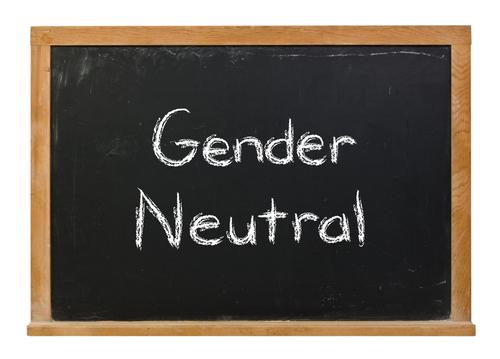Gender-Neutral Terms for Someone Else’s Nuptials

As someone in the wedding business, it’s important to stay on top of what’s new and relevant in your industry. Whether you’re an officiant, a planner, or a vendor, you never know whose nuptials you’ll be working on. With same-sex marriages now legal as well as increased awareness of transgender, nonbinary, and gender nonconforming persons, the male-female binary in marriage ceremony language is outdated. Inclusivity, flexibility, and diversity are important to couples of various genders and sexualities. Consider these gender-neutral terms or come up with new ones when writing scripts, creating invitations, or preparing wedding-day gifts.
Referring to the Happy Couple in Gender-neutral Terms
The terms “bride” and “groom” don’t make sense as a pair for same-sex unions. When one or both of the folks getting hitched are enby or nonconforming these terms lose their meaning altogether. Consider these gender-neutral terms:
Nearlywed: When putting together invitations or anything related to pre-wedding activities, “nearlywed” is a gender-inclusive alternative to “bride-to-be,” “groom-to-be,” or “spouse-to-be.” This new word is similar to “newlywed,” except it specifically refers to the couple before they’ve tied the knot.
Fiance: While this is not a new word, traditionally the spelling of this word indicated the gender of the person getting married. “Fiancé” referred to an engaged man, while “fiancée” referred to a woman. These days, you can use the unaccented word (with one “e”) to refer to either of the future spouses.
Newlywed: This reliable word applies to anyone who has just tied the knot. Keep this term in mind, especially if you’re writing a reception speech or preparing a post-wedding brunch.
Spouse: This term is fine for anyone who has been married for any length of time. It’s great for married couples such as parents, relatives, and other friends in the building.
Significant Other(s), Partner(s), or Couple: These are reliable terms for any pair of people who are dating, engaged, or married.
Life Partners or Life Mates: Use these alternatives when pronouncing a new couple at the end of a ceremony or discussing the life ahead of them as a union.
Talking About the People in a Wedding
Terms like “best man,” “maid of honor,” “bridesmaid,” and “groomsman” are specific to genders. Even if the marriage is between a straight couple, consider these neutral terms for those standing with the nearlyweds.
Attendant: Refer to any person standing with the couple on this special day as an attendant.
Wedding Party: Use this instead of “bridal party” to refer to all attendants as a unit. Other alternatives include “wedding crew” or “support team.”
Best Person or Person of Honor or Attendant of Honor: Use one of these alternatives for a designated best friend or close sibling who is going to be entrusted with duties that fall to a maid of honor or best man.
Flower Pal or Flower Person: In many ceremonies, a young girl of a certain age carries flowers down the aisle. These terms are more appropriate, especially if the person bringing flowers is not female or over a certain age. “Ring bearer” is essentially a genderless term, but the same rules (or lack thereof) apply as with a flower pal.
Including Everyone Else
You’ve taken care to be mindful of gender-neutral terms for the couple and others participating in the ceremony. Don’t forget the people in attendance. Instead of “ladies and gentlemen,” try “friends and family,” “loved ones,” or “dearly beloved.” A “bachelorx” (pronounced bachelor-ex) or “pre-wedding party” are genderless terms for a bachelor or bachelorette party.
Using inclusive language for nuptials is a sign of respect for the couple and the people they are inviting to celebrate them. Being intentional about language is not an inconvenience. It shows that you recognize love is fundamental and something to be shared and experienced by all. Creating new terms to be more inclusive also recognizes that language evolves based on changes in society. There’s nothing wrong with making the occasion more welcoming for the “dearlyweds” and their circle.














